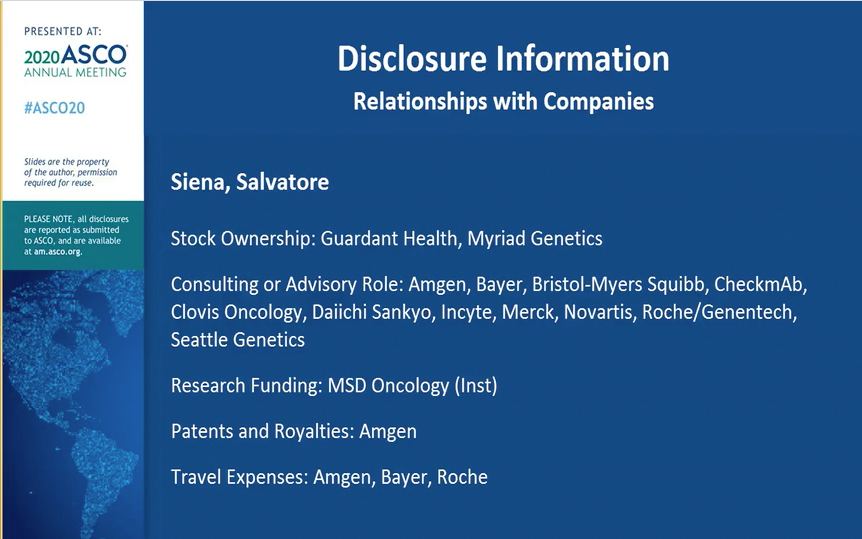Dissection followed by adjuvant chemotherapy remains the standard-of-care for resectable pancreatic cancer. However, outcomes remain suboptimal, due to the inability of many patients to receive adjuvant chemotherapy as well as early progression in the perioperative period. Perioperative chemotherapy using aggressive multi-agent chemotherapy regimens for early control of systemic disease could overcome these problems.
Key eligibility criteria for SWOG S1505, designed to evaluate efficacy and safety of both modified FOLFIRINOX and gemcitabine plus nab-paclitaxel, included a confirmed tissue diagnosis of pancreatic adenocarcinoma [1]. No prior cancer therapy of any kind was allowed. Resectability was strictly defined, using a contrast-enhanced CT or MRI. Patients were randomised in a 1:1 ratio to either modified FOLFIRINOX (5FU 2,400 mg/m2, irinotecan 180 mg/m2, oxaliplatin 85 mg/m2) or gemcitabine (1,000 mg/m2) plus nab-paclitaxel (125 mg/m2).
The preoperative portion was 3 months of chemotherapy following which a restaging scan was performed. In the absence of progressive disease, surgical dissection was performed. After dissection, patients were assigned to 3 more months of chemotherapy with the same regimen that they were randomised to originally for a total of 6 months of perioperative chemotherapy. Primary endpoint of SWOG S1505 was OS at 2 years. The study had a "pick the winner" design in which OS at 2 years for each arm was compared with the historical threshold of 40%. If 2-year OS reached 58% or more, the 2 arms would be compared for superiority.
A total of 147 patients were enrolled, but 43 patients had ineligible disease by a central radiology review. Of all eligible patients, 53 actually started preoperative modified FOLFIRINOX and 45 started preoperative gemcitabine/nab-paclitaxel. Respectively, 31 and 26 patients started postoperative chemotherapy; 27 and 19 patients completed postoperative chemotherapy.
The study did not meet its primary endpoint: 2-year OS was 43.1% in the modified FOLFIRINOX arm and 46.9% in the gemcitabine/nab-paclitaxel arm. Median OS was 22.4 months and 23.6 months, respectively. Complete major response was achieved in 25% of the patients in the modified FOLFIRINOX arm and in 42% of the patients in the gemcitabine/nab-paclitaxel arm. R0 resection was achieved in 85% of the patients in both arms. Median disease-free survival after resection was 10.9 months in the modified FOLFIRINOX arm versus 14.2 months in the gemcitabine/nab-paclitaxel arm.
- Sohal D, et al. ASCO Virtual Meeting, 29-31 May 2020, Abstract 4504
Posted on
Previous Article
« Real-world data of sequential sorafenib followed by regorafenib in unresectable HCC Next Article
Cardiotoxicity: consider switching to S-1 »
« Real-world data of sequential sorafenib followed by regorafenib in unresectable HCC Next Article
Cardiotoxicity: consider switching to S-1 »
Table of Contents: ASCO 2020
Featured articles
COVID-19 & Telemedicine
COVID-19 and Cancer Consortium Registry: initial results
Oncology hospital-at-home model reduces hospitalizations, emergency department visits, and costs
Nurse-led telephone triage system reduces hospitalizations, helps patients manage symptoms at home
Melanoma
Adjuvant pembrolizumab: durable RFS for stage III melanoma
Adjuvant pembrolizumab: durable RFS for stage III melanoma
Pembrolizumab plus low-dose ipilimumab well tolerated after progression on PD1 antibody therapy
Toripalimab plus axitinib effective in metastatic mucosal melanoma
Breast & Ovarian Cancer
Advanced breast cancer: locoregional therapy does not improve OS
T-DM1 does not improve safety or efficacy in HER-2 positive early breast cancer; favorable iDFS reported
Maintenance olaparib improves OS in relapsed ovarian cancer with BRCA1/2 mutation
Combination pembrolizumab/chemo improves PFS in metastatic TNBC
Effect of veliparib with or without cisplatin in breast cancer: results of SWOG S1416
PHOEBE, a phase 3 trial comparing pyrotinib and lapatinib in HER2-positive metastatic breast cancer
BYLieve demonstrates efficacy of PIK3CA-directed treatment post CDK4/6-ihibition
Strategies emerge for chemotherapy de-escalation in HER2-positive breast cancer
Multiple Myeloma
Carfilzomib: no PFS benefit for multiple myeloma
Lung Cancer
ES-SCLC: tremelimumab + durvalumab + chemotherapy misses endpoint
Adjuvant osimertinib in NSCLC: practice changing ADAURA trial
ES-SCLC: pembrolizumab KEYNOTE-604 data
Second-line gemcitabine plus ramucirumab significantly improves overall survival
Tiragolumab and atezolizumab: ORR in NSCLC
MET-amplified advanced NSCLC responds well to MET inhibitor capmatinib
Genitourinary Cancer
Urothelial cancer: avelumab works as maintenance therapy
ARAMIS final OS and nmCRPC safety outcomes
Final survival results from phase 3 SPARTAN trial
Novel drug for kidney cancers/VHL patients
Primary analysis from IMvigor010, adjuvant atezolizumab in high risk muscle-invasive urothelial carcinoma
First randomised trial of Lu-PSMA in mCRPC progressing after docetaxel
Gastrointestinal Cancer
HER2-expressing metastatic colorectal cancer: trastuzumab deruxtecan
REGOMUNE: a phase 2 study combining regorafenib and avelumab
Cardiotoxicity: consider switching to S-1
Perioperative chemotherapy for resectable pancreatic ductal adenocarcinoma
Real-world data of sequential sorafenib followed by regorafenib in unresectable HCC
Paediatric Cancer
Sustained improvements in quality of life with larotrectinib
Promising first immunotherapy trial in placental trophoblastic tumours
Precision medicine for poor-prognosis paediatric patients
Related Articles

September 17, 2020
HER2-expressing metastatic colorectal cancer: trastuzumab deruxtecan
September 8, 2020
ES-SCLC: pembrolizumab KEYNOTE-604 data

September 2, 2020
ASCO 2020 Highlights Podcast
© 2024 Medicom Medical Publishers. All rights reserved. Terms and Conditions | Privacy Policy
HEAD OFFICE
Laarderhoogtweg 25
1101 EB Amsterdam
The Netherlands
T: +31 85 4012 560
E: publishers@medicom-publishers.com

